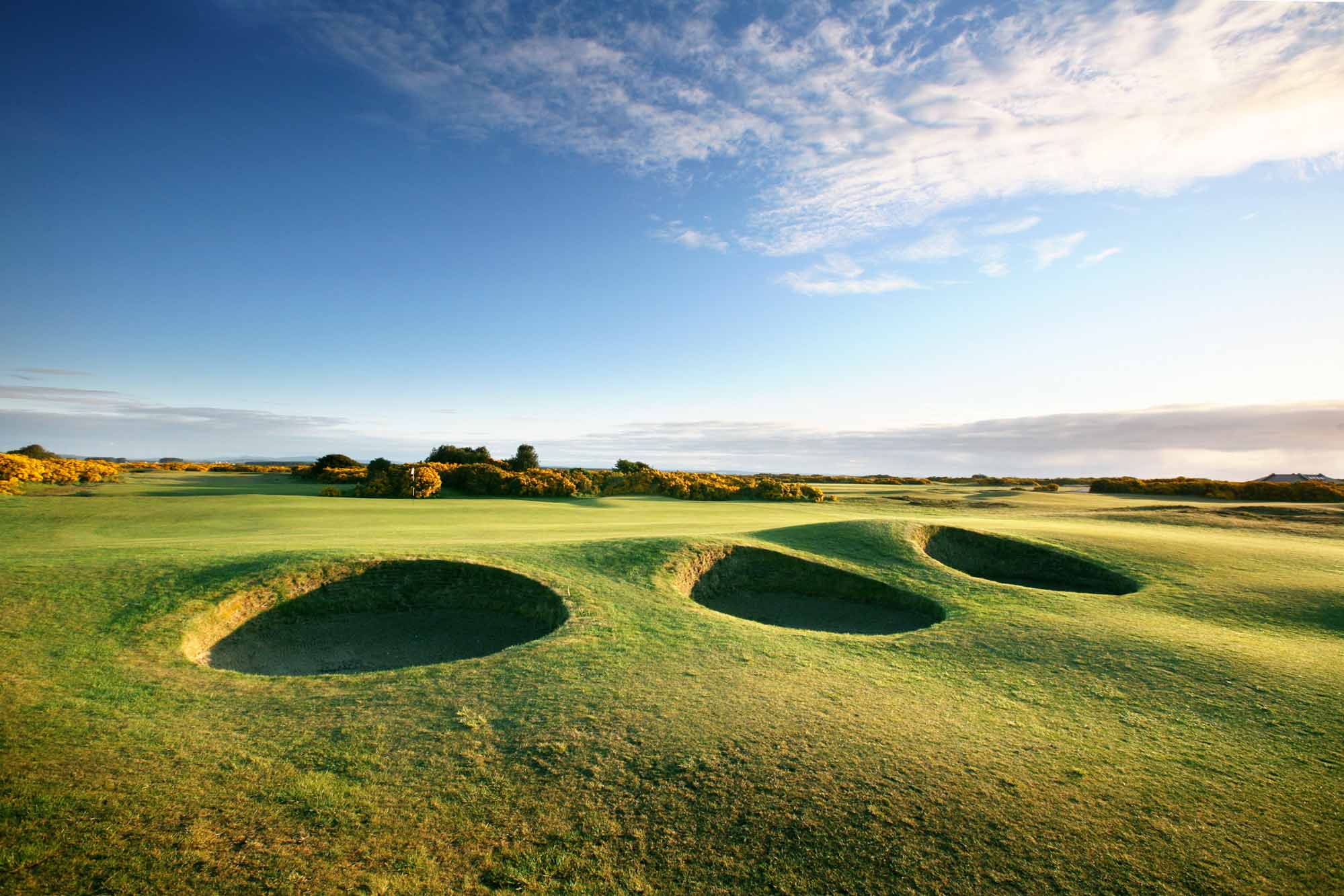St Andrews New Course

Overview
After The Old and Ladies Putting Green or Himalayas came the New Course in 1895. It was followed shortly thereafter by the Jubilee and finally the Eden. In modern times, the Castle Course is the most recent addition.
The New opened for play on April 10, 1895 with the local doctor, sherriff, and his lad playing alongside Old Tom. It was mentioned the flags were coloured blue going out and yellow coming in! (Dundee Courier April 11, 1895)
Golf Course Review
St Andrews New Course is touted as the oldest 'New Course' in the world. An out and back traditional links routing makes its way to the Eden Estuary before returning back to town. The course is flanked by the third championship course at St Andrews, The Jubilee, on its east side.
St Andrews New Course History
Laid out by Old Tom Morris in 1895, the links lies adjacent to the Old Course with holes 1 through 8 bordering it on the east side. The first tee and 18th green are located near the Ladies Putting Green or Himalayas. Holes 4 through 6 play inside the shepherd's crook of the Old Course routing. There are some shared hallmarks between The Old Course and The New Course. For example, shared fairways and playing corridors as well as a large double green for the 3rd and 15th.
Not So Fast!
The New is a difficult golf course measuring a tidy 6686 yards and is the most played course at St Andrews by the local members. Despite being overlooked by most foreign visitors who play The Old Course and race off to Kingsbarns or Carnoustie, The New Course offers one of the best links in the British Isles literally next door to the Old Course.
Value for Money
The St Andrews Links Trust describes the course as having 'undulating fairways and challenging greens' making it 'a classic test of links golf.' Of note, the New can be played for less than half of the green fee for the Old and is even less than a round on the Castle Course!

St Andrews New Course - Videos
Watch hidden links review of st andrews new course

Featured Architect: MacKenzie, Alister
As taken from his book, Golf Architecture, Alister MacKenzie felt the following were essential: The course, where possible, should be arranged in two loops of nine holes. There should be a large proportion of good two-shot holes and at least four one-shot holes. There should be little walking between...








